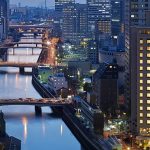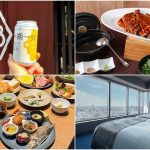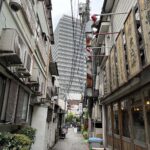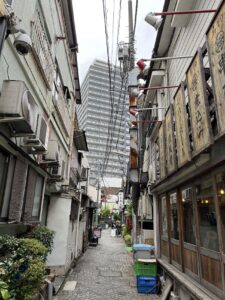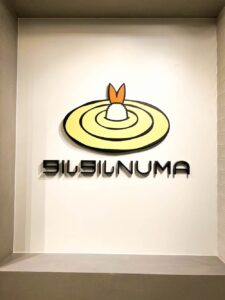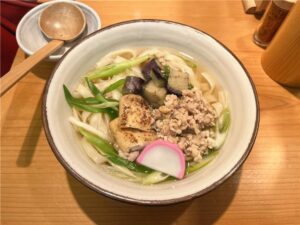Hiroshima is not only a global symbol of peace—it’s also a treasure trove of World Heritage sites, stunning nature, and unique culture. From the moving Atomic Bomb Dome and Peace Memorial Park to the “floating” Itsukushima Shrine, plus the majestic Hiroshima Castle and the poetic Senko-ji Temple, every stop blends history with beauty. Wander Onomichi’s “Cat Alley” and meet the charming Fukuishi-neko stone cats, or head to Kure’s JMSDF Kure Museum to step inside a real submarine. Nature lovers shouldn’t miss the four-season scenery of Taishakukyo Gorge and its brilliant fall foliage, or dreamy Okunoshima—“Rabbit Island”—home to nearly a thousand friendly wild rabbits.
This guide rounds up the top ten must-visit spots in Hiroshima, covering iconic landmarks and soothing hideaways in one trip.
1. Atomic Bomb Dome (Genbaku Dome)
Recognized as a UNESCO World Heritage Site, the Atomic Bomb Dome (原爆ドーム) is a powerful symbol of peace. Originally built in 1915 as the Hiroshima Prefectural Commercial Exhibition Hall, it hosted exhibitions and promoted local products. At 8:15 a.m. on August 6, 1945, the world’s first atomic bomb was detonated over Hiroshima; the blast’s hypocenter was roughly 160 meters away. The shockwave and intense heat destroyed the building—wooden sections were incinerated—leaving only the steel frame and central dome. Locals began calling it the “A-Bomb Dome.”
Preserved exactly as it was after the bombing, the Dome stands as a stark reminder of the horrors of war and nuclear weapons—an emblem of “No More Hiroshima.” In 1996, UNESCO inscribed it as a World Cultural Heritage site, a monument urging nuclear disarmament and peace across generations. Today it’s both Hiroshima’s defining landmark and a place where visitors from around the world come to mourn and pray for peace.
■ Address: 広島県広島市中区大手町1-10
■ Hours: Open access
■ Admission: Free
2. Hiroshima Peace Memorial Park
Located near the blast hypocenter, Hiroshima Peace Memorial Park is dedicated to remembrance and peace. Within the park you’ll find the World Heritage-listed Atomic Bomb Dome, the Cenotaph for the A-Bomb Victims, the Fountain of Prayer, and the Peace Bell—whose chime is one of Japan’s “100 Soundscapes.” The leafy grounds are a place of reflection for locals and visitors alike.
The Hiroshima Peace Memorial Museum exhibits survivors’ belongings, archival footage, and historical records, conveying the stark reality of the bombing and the preciousness of peace. Each year on August 6, a memorial ceremony draws people from around the world to honor the victims and renew hopes for a nuclear-free future.
■ Address: 広島市中区中島町1
■ Hours: Park open access
Peace Memorial Museum: Mar–Nov 8:30–18:00 (until 19:00 in Aug); Dec–Feb 8:30–17:00
Information Reference Room: 8:30–17:00 (closed on weekends & national holidays)
■ Admission: Park free; museum tickets required
3. Orizuru Tower
Opened in 2016 beside the World Heritage site, Orizuru Tower (おりづるタワー) is a new symbol of “recovery and the future.” Blending memory and modern design, its rooftop observatory “Hiroshima Hills” offers open-air views of Peace Memorial Park and the A-Bomb Dome—on clear days you can even see Miyajima.
On the 12th floor, the Orizuru Plaza lets visitors fold paper cranes and drop them into the “Orizuru Wall,” gathering prayers for peace from around the world. The tower also features interactive origami-themed digital experiences, a local-products market, and a café highlighting regional fruits.
The “Sanpo Slope” is a spiral ramp from the 1st floor to the rooftop, perfect for a leisurely stroll; at the core, the ~70-meter “KURUKUURU” slide adds playful thrills. A large mural envisions the century after the war. With views, culture, and fun in one, Orizuru Tower is a modern must-see.
■ Address: 広島県広島市中区大手町1-2-1
■ Hours: Observatory & Market 10:00–18:00 (rooftop closes 30 min before)
■ Admission: Adults ¥2,200; Jr./Sr. High ¥1,400; Elementary ¥900; Age 4+ ¥600
Paper-crane offering: ¥100
4. Itsukushima Shrine (Miyajima)
Itsukushima Shrine is famed for buildings that appear to float on the sea. Founded in 593 and redesigned to its present scale around 1168 by Taira no Kiyomori, the shrine stands over the water because the island itself is sacred. At high tide, the great torii and corridors rise above the waves, creating a dreamlike scene.
Six shrine buildings are designated National Treasures, with many others listed as Important Cultural Properties—showcasing classical Japanese architecture and Shinto faith. The annual Kangensai (June) is the shrine’s signature ritual, and bugaku court-dance performances are held more than ten times a year.
■ Address: 広島県廿日市市宮島町1-1
■ Hours: See schedule image / official site

■ Admission: Shrine—Adults ¥300; High School ¥200; Jr. High/Elementary ¥100
Treasure Hall—Adults ¥300; High School ¥200; Jr. High/Elementary ¥100
Combo Ticket—Adults ¥500; High School ¥300; Jr. High/Elementary ¥150
5. Hiroshima Castle (Carp Castle)
Hiroshima Castle—nicknamed “Carp Castle”—was built in 1589 and is one of Japan’s notable flatland castles, often compared with Matsumoto and Nijo and included among Japan’s Top 100 Castles. Its design drew inspiration from Osaka Castle and represents early modern castle architecture. The atomic bombing destroyed most of the complex, leaving only the stone walls and moat. In 1958, the tenshu (main keep) was reconstructed in reinforced concrete as a five-story tower; several Ninomaru structures were later restored in wood by 1994.
Today the keep houses a history museum displaying screens like “Scenes of Hiroshima Castle Town,” samurai armor, swords, and materials on castle history; the top-floor observatory overlooks the city and, on clear days, as far as Miyajima. On weekends and holidays, performances by the Aki Hiroshima Busho-tai reenact the Sengoku era spirit—making the site both educational and atmospheric.
■ Address: 広島県広島市中区基町21-1
■ Hours: Mar–Nov 9:00–18:00 (last entry 17:30); Dec–Feb 9:00–17:00 (last entry 16:30)
■ Admission: Adults ¥370; Seniors 65+ / High School ¥180; Jr. High and under free
6. JMSDF Kure Museum (Tetsu-no-Kujira Hall)
The JMSDF Kure Museum—nicknamed Tetsu-no-Kujira (“Iron Whale”)—is the only museum in Japan where you can tour a real, decommissioned submarine. The Akishio (あきしお) served from 1986 to 2004 and has been relocated intact for visitors to explore. Inside, you’ll find the control room, periscope, and living quarters, offering an authentic sense of life under the sea. Exhibits explore the Maritime Self-Defense Force’s history, minesweeping, and submarine operations.
On the first floor, a café serves specialties made with Seto Inland Sea ingredients. The submarine-shaped “Akishio Curry” is a fan favorite—don’t miss it.
■ Address: 広島県呉市宝町5-20
■ Hours: 10:00–18:00 (last entry 17:30)
■ Admission: Free
7. Senko-ji Temple (Onomichi)
Founded in the Heian period and traditionally attributed to Kobo Daishi, Senko-ji boasts over 1,200 years of history. The temple is famed for the “Tama-no-iwa” legend and its main hall’s cliff-side platform reminiscent of Kyoto’s Kiyomizu-dera, overlooking Onomichi and its harbor. The bell in Kyo-on-ro is listed among Japan’s “100 Soundscapes,” drawing crowds on New Year’s Eve.
Senko-ji Park stretches from the summit down the slope and is one of Onomichi’s best cherry-blossom spots, listed among Japan’s Top 100 Sakura Sites. In spring the temple is framed by blooms; early summer brings wisteria and azaleas. The park includes an observatory, art museum, eateries, and souvenir shops; a ropeway runs from the foothills. Visitors pray for exam success, matchmaking, safe childbirth, traffic safety, and household well-being—while enjoying sweeping city views and cultural depth.
■ Address: 広島県尾道市西土堂町19-1
■ Hours: Open access
■ Admission: Free
8. Neko no Hosomichi (Cat Alley)
Onomichi’s “Cat Alley” is a ~200-meter narrow lane themed around cats and art—cat lovers’ paradise. Conceived by writer and town-revitalization advocate Sonoyama Shunji as part of the “Onomichi Ihatov” project, its name draws on Kenji Miyazawa’s utopia and Basho’s “Oku no Hosomichi.” The route is dotted with delightful Fukuishi-neko (“lucky stone cats”) art pieces.
Stray cats roam freely, adding warmth to the path. Traditional homes, natural scenery, cafés, galleries, and small museums create a scene straight out of a film—an inspiring blend of art, culture, and calm.
■ Address: 広島県尾道市東土堂町
■ Hours: Open access
■ Admission: Free
9. Taishakukyo Gorge
Taishakukyo is a national park with an 18-kilometer limestone gorge listed among Japan’s 100 Landscapes. Its many natural wonders include Onbashi, Japan’s largest natural stone bridge—steeped in mythic aura—and several limestone caves. Hakuundo Cave is the only one open to the public, revealing surreal subterranean formations up close.
Shinryu Lake is an artificial reservoir that blends seamlessly with the landscape—especially gorgeous in autumn. Sightseeing boats and canoes let you admire cliffs and rock formations from the water. Expect fresh green in spring and vivid foliage in fall. Nearby sweets shops, sake breweries, and roadside stations round out an easygoing day trip.
■ Address: 広島県神石郡神石高原町
■ Hours: Open access
■ Admission: Free
10. Okunoshima (Rabbit Island)
About 3 km off Takehara in Hiroshima Prefecture, Okunoshima is a lush island nicknamed “Rabbit Island” for its 500–1,000 friendly wild rabbits. Visitors can encounter and feed rabbits all around the island—making it a favorite for families. The island also bears a heavy past: during the Pacific War, a secret poison-gas plant operated here, and Okunoshima was once even removed from maps. Remnants such as storage sites and factory ruins remain, and the Poison Gas Museum documents the island’s history—reminding us of the value of peace.
Ferries serve the island, and the on-island resort Kyukamura offers hot springs, camping, and local cuisine—don’t miss the popular octopus tempura. With serene Seto Inland Sea views and a multitude of rabbits, Okunoshima is both healing and historically meaningful.
■ Address: 広島県竹原市忠海町大久野島
■ Hours: Open access
■ Admission: Free
Hiroshima is a city where profound history meets natural beauty. From World Heritage icons to dreamy nature escapes, every stop tells a story. Whether you’re tracing peace landmarks, enjoying sea and mountain vistas, or getting up close with rabbits and cats, you’ll leave with lasting memories. On your next trip, take time to feel this city’s warmth—and bring home your own Hiroshima moments.

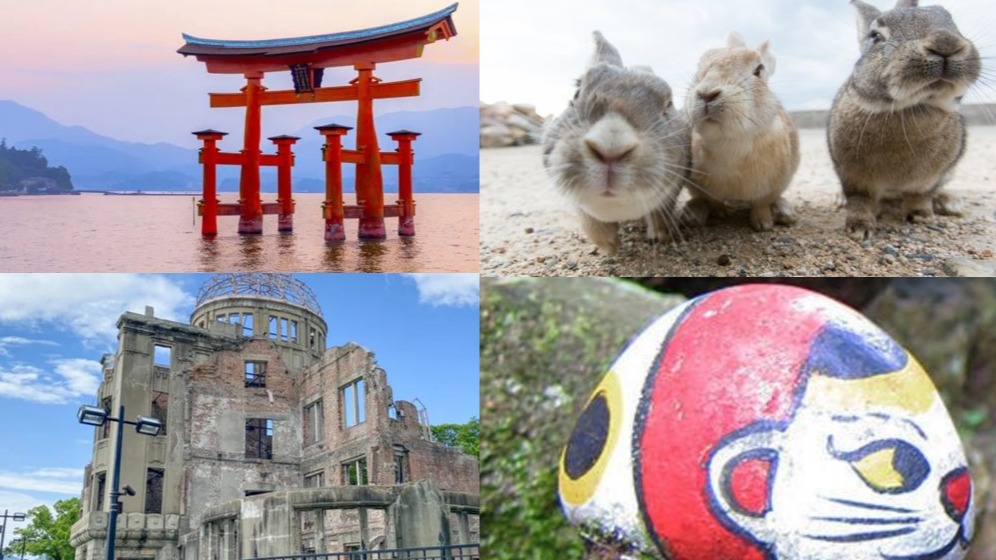
























_1753866387.jpg)

